Physics

A Special Guest Post by Richard ("Dick") Flatman
"I call our world Flatland,not because we call it so, but to make its nature clearer to you, my happy readers, who are privileged to live in Space."
This is how my great-grandfather started his memoirs. Memoirs he wrote in solitary confinement. Years later he died, imprisoned and alone, and not aware that his ideas were already starting to change not only the views and imagination of us Flatlanders, but also the perspectives of you Spacelanders.
How time has progressed! My great-grandfather is now considered a hero of science. A…

Back to breathing the air of Fermilab after a full year away, I got to gauge a bit better the aftermath of the little incident created by a posting of mine in July. As often happens with internet bubbles, they look quite dramatic as they inflate, but they leave no big scars. Two months have passed, and this looks like a good time to post here some ruminations about the general issue.
Physics Experiments And ConfidentialityA particle physics experiment is typically a very complex endeavour, which takes years to build and operate, and it requires the full commitment of hundreds of scientists…
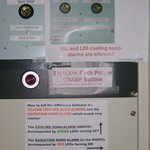
Since today, and for a full week, I will be serving as Scientific Coordinator (SciCo) of the crew operating the CDF experiment at Fermilab. This honorable task (or in alternative, the serving as "Consumer Operator" or "ACE") is required to all collaborators once or twice per year, in order to provide 24/7 operation of the detector and supervision of the data-taking activities.
The crew is formed by a SciCo, a CO, and an ACE.
The SciCo communicates with the main accelerator control room, directs activities in the CDF control room, is responsible for safety and for decisions on the quality of…
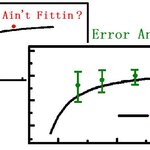
Presenting measurement values together with some educated guess on accuracy or precision is scientific standard. It is very important to any good scientist, so much so that it is basically my religion. Delta (Δ) is my god! Those statisticians who serve sigma (σ) and teach the primacy of it do not understand that delta is the larger one after all (sorry - the pun here is strictly for the geeks among you).
One would think that any undergraduate in any scientific field knows the basics, but what I find even among principle investigators and postdocs in the exact sciences like physics is…

String theory was originally developed to try and describe the fundamental particles and forces that make up our universe. Over the last 25 years, string theory has become some physicists' contender for a 'theory of everything', reconciling particle physics with cosmology - a puzzle that tormented Einstein for the last 30 years of his life. It contends that the subatomic particles found in nature, such as electrons and quarks, may not be particles at all but instead tiny vibrating strings. String theorists said our universe is 10-dimensional but during the big bang,…

Wave functions and characteristic vectors.
The first thing that draws attention is the concept of the wave function. It is a probability density function that is correlated with an observable. On its turn the observable corresponds to a continuous normal operator. The wave function corresponds with a single vector in Hilbert space and its values correspond to the inner product of this vector with the eigenvectors of the operator that belongs to the observable. The corresponding eigenvalues form the argument of the of the wave function. The function describes the probability of finding a given…
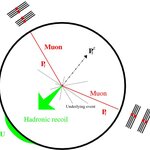
A new paper produced by the DZERO collaboration got me quite interested today, for several reasons. The analysis is based on a large data sample: over seven inverse femtobarns of proton-antiproton collisions! This is a huge dataset, the result of about 500 trillion proton-antiproton collisions! In fact, the measurement these data has made possible is extremely precise and it exposes quite strikingly the shortcomings of our present modeling of the production of vector bosons.
In 7 inverse femtobarns of collisions DZERO dug out a total of 455 thousand Z decays to muon pairs, and 511 thousand…

The Standard Model of particle physics has been under attack since its original formulation, in 1967, and yet it has so far resisted every assault; in so doing it has become one of the most thoroughly tested physical theories. Like it or not, the construction has stood the test of time so well that theorists and experimentalists alike feel threatened by the chance that the Large Hadron Collider, too, will fail to find new physics beyond what the model predicts.
Of course, the LHC experiments ATLAS and CMS will not remain empty-handed even if new physics should really prove to be far from "…
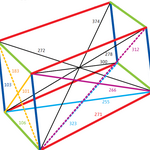
The following parallelepiped was found by Clifford Reiter und Jorge Sawyer (Lafayette College, Easton, Pensilvania) with brute force computer trials.
It is a parallelepiped with all three sides being natural numbers. How the hell can it also have all surface diagonals AND all internal diagonals being relatively small natural numbers? Notice that there are two diagonals per surface! Just deforming until one diagonal is natural will not do the trick, not even for just a single surface. There are three of those AND four internal diagonals. How can this ever work out at all? Is this some infinite…
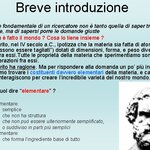
Last week in Tesero, in front of an audience of 150 interested laypersons, I spoke about the marvels of particle physics (the poster of the conference I gave is below, click to enlarge). My first slide made clear what I believe is the most important gift of a researcher -theorist or experimentalist- in fundamental science:
The first point can be translated as follows: The fundamental gift of a researcher is not to be capable of finding the correct answers, but to be able of posing the right questions. It is something I know very well, but its extent goes beyond the sheer field of pure…